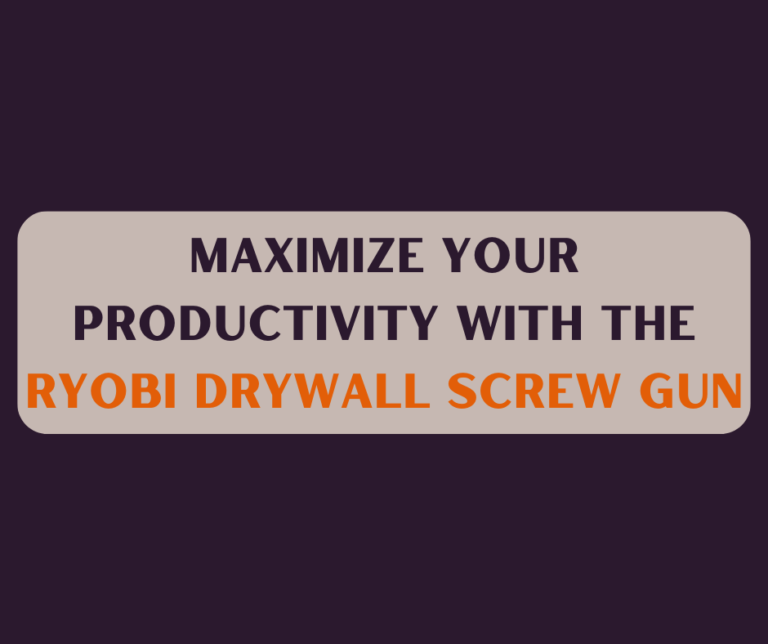Is Drywall Taping Techniques Worth the Hype?
When it comes to drywall installation and finishing, one component can make or break the quality of your work: the taping technique. As a seasoned contractor, I’ve seen a range of projects across homes and commercial spaces, and the difference between an amateur job and a professional finish largely comes down to how well the drywall is taped and finished. In this blog post, we’ll explore whether drywall taping techniques are truly worth the hype, backed by my real-world experiences and insights.
Understanding the Importance of Drywall Taping
Drywall taping is no trivial task. It involves joining two pieces of drywall together, concealing the seams, and creating a smooth surface for painting. A well-taped seam minimizes the appearance of joints and prevents cracking over time. Here are some compelling reasons why taping technique matters:
- Aesthetic Appeal: Well-executed taping minimizes imperfections and creates a professional look.
- Structural Integrity: Proper taping reinforces the joint, which is vital for maintaining the integrity of the drywall over time.
- Time Efficiency: Mastering taping techniques can speed up your finishing process, a major advantage for contractors trying to meet deadlines.
If you neglect proper taping, the results are often unsightly. Poor joints can lead to cracking and can even affect the structural stability of the walls. That’s why investing time and effort into mastering the art of taping can yield great dividends in quality and speed.
The Tools You Need
To get started, it’s essential to equip yourself with the right tools. Level5 has a variety of products specifically designed for drywall taping, making the process smoother and more efficient:
-
Automatic Taper: This tool is a game-changer for applying joint compound quickly and evenly. The Level5 Automatic Taper allows for fast application, reducing the time spent on taping.
-
Taping Knives: Essential for spreading joint compound smoothly, the Level5 Taping Knives come in various sizes to tackle different areas effectively. The right knife can make a significant difference in achieving that flawless finish.
-
Corner Finisher: For those tricky corners, the Level5 Corner Finisher applies compound to the corners with ease, allowing for perfect angles without leaving behind excess compound.
- Mud Pan: Using a durable Level5 Mud Pan keeps your joint compound organized and accessible, crucial for efficiency during taping.
Investing in quality tools like those from Level5 not only enhances your efficiency but helps you achieve a premium result, making it worthwhile.
Taping Techniques: A Step-by-Step Guide
To help you grasp effective techniques, let’s break them down into manageable steps:
1. Preparation
Before diving into taping, ensure the following:
- Clean Surface: Make sure that your drywall is clean and free of dust or debris.
- Tools Ready: Gather all your tools, including your mud pan, taping knives, and joint compound.
2. Mix the Joint Compound
If you’re using pre-mixed compound, give it a good stir to ensure it’s consistently mixed. If you’re mixing your own, aim for a creamy texture that’s easy to work with but not too runny.
3. Apply the First Coat
Using a trowel or knife, apply a thin layer of joint compound over the seam. Don’t worry about being perfect – your second coat will cover most imperfections.
4. Embed the Tape
Place your drywall tape over the fresh joint compound. Using your knife, gradually press down on the tape, ensuring no air pockets are trapped underneath.
5. Smooth it Out
Once the tape is set, apply another layer of joint compound over the tape, feathering the edges for a seamless look. Essential here is the technique of using consistent pressure on your knife.
6. Apply Additional Coats
After the first coat dries, lightly sand it down, then apply a second and even a third coat as needed. Each coat should be slightly wider than the previous one, ensuring a smooth transition to the wall surface.
7. Final Sanding and Finishing
Once all coats are dried, sand the area to ensure smoothness and prepare for painting. This is also the stage where you may want to consider using Level5 Skimming Blades for a flawless finish.
Expert Tips to Elevate Your Taping Game
- Know Your Tape: Use paper tape for stronger joints, while mesh tape can be an excellent choice for smaller repairs.
- Humidity Matters: Aim to work in low-humidity conditions to expedite drying time for joint compound.
- Practice Makes Perfect: Consider practicing on scrap drywall before tackling a project to refine your technique.
Common Mistakes to Avoid
While taping is a crucial skill, many amateurs fall into common traps that compromise their final product:
- Too Much Compound: Applying excessive joint compound can lead to uneven surfaces and slow drying times.
- Skipping Sanding: Always sand between coats to avoid an unsightly finish.
- Ignoring Drying Times: Be sure to allow adequate drying time between applications to minimize imperfections.
Conclusion: Is It Worth the Hype?
In the world of drywall, taping techniques are undoubtedly worth the hype. With the right approach, tools, and techniques, the final finish can elevate any project, ensuring professional-level results, whether you’re a DIY enthusiast or a seasoned contractor.
By investing in quality taping tools from Level5 and honing your skills through practice, you’ll not only save time but also achieve stunning results. If you’re ready to take your drywall finishing skills to the next level, check out our articles on The Best Drywall Taping Techniques and How to Repair Drywall Like a Pro.
Have you ever struggled with drywall taping? What tips do you have to share? Leave your thoughts in the comments below, and let’s keep the conversation going!

